The 2016 Kalamazoo Crash: How It Unfolded
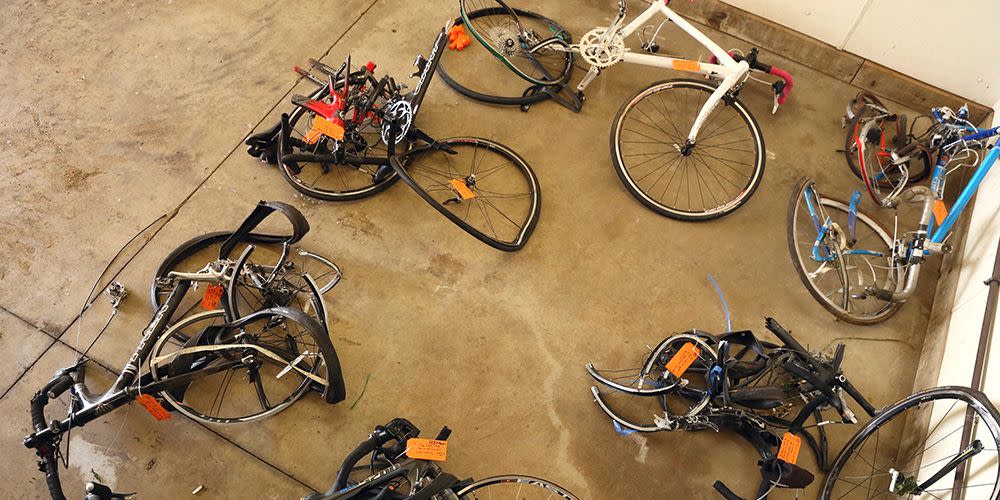
On June 7, 2016, the deadliest crash between an automobile and a group of cyclists in recent memory occurred in Kalamazoo, Michigan.
The collision left nine riders dead or seriously injured. The cyclists were part of the regular Tuesday evening Chain Gang ride, which has been a constant in Kalamazoo cycling for more than a decade and its members—mostly middle age and older—are known as safe and conscientious riders. Many of their rides end with food, drinks, and laughs at Bell’s Brewery.
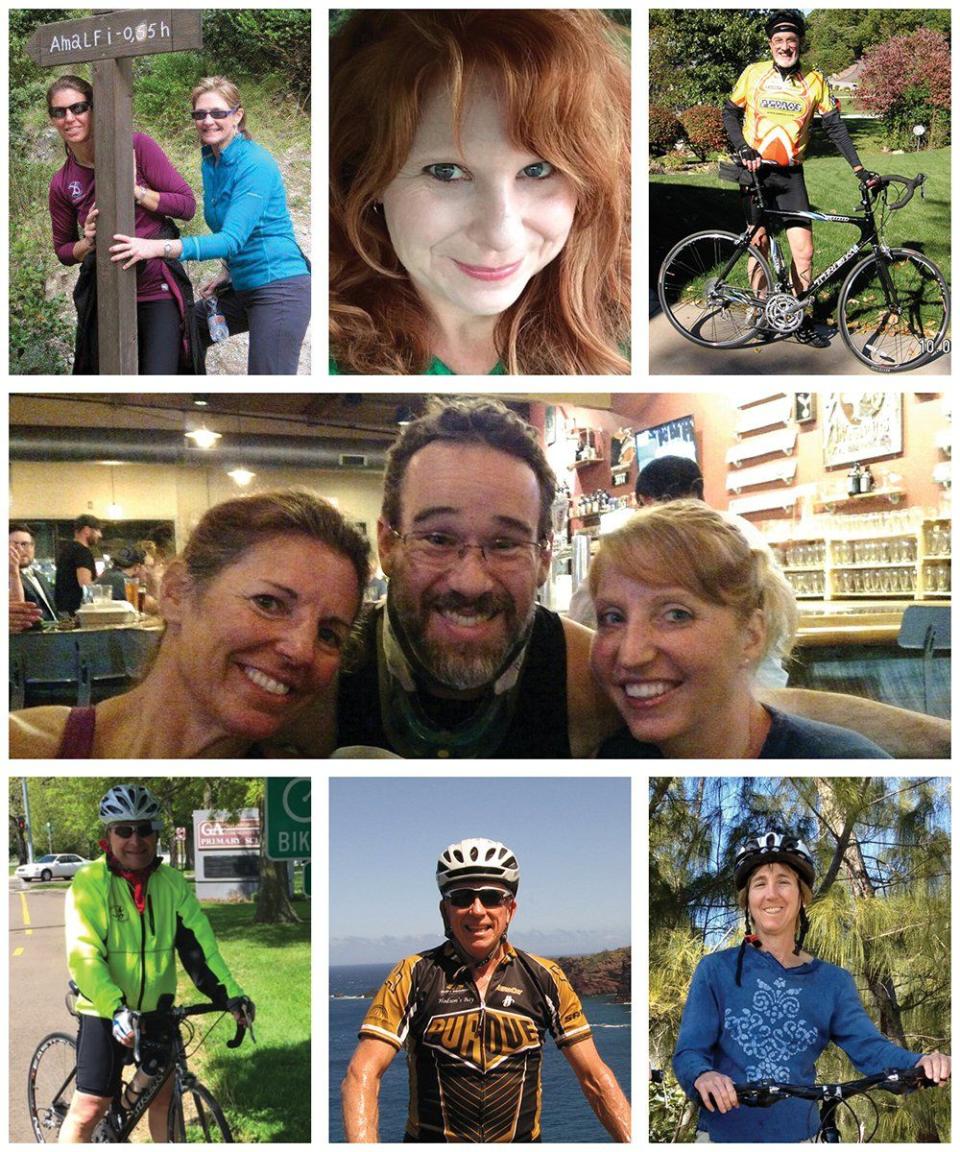
The group was 20 minutes into the ride when a driver struck them from behind. Five were killed at the scene: Debra Ann Bradley, 53; Melissa Ann Fevig-Hughes, 42; Fred Anton "Tony" Nelson, 73; Lorenz John "Larry" Paulik, 74; Suzanne Joan Sippel, 56. Four others were seriously injured and hospitalized. News of the crash reverberated throughout Kalamazoo and the world, infuriating both riders and non-riders alike.
This is the story of that fatal day and its aftermath, as told by the survivors, their family, first responders, and community members.
Several Hours Before the Crash
Jennifer Johnson, 40, survivor: I’ve been doing the Chain Gang ride for 12 years with the same group of core individuals. It’s a more social atmosphere, emphasizing fellowship within the cycling community. Just a fun, even-paced ride.
My husband [Steve] usually leads the ride, but couldn’t that night, so it was going to be my turn for the first time this year. I was a little nervous, too, because I hadn’t been getting in the miles I normally do.
We have several routes we’ll ride, and I had chosen that one because it was my favorite. It’s a great route for doing hill training.
Sheila Jeske, 53, survivor: This was going to be my first Chain Gang ride of the year. It was a last-minute thing; I hadn’t done a lot of them over the last couple of years, but Suzanne and Deb wanted to go.
According to police reports, Charles Pickett Jr. had smoked pot that day; at 5 p.m., he had also taken 16 to 20 Flexeril pills and 10 Tramadol pills. He had also had a dispute with his girlfriend, telling her he’d “be better off dead” before speeding away.
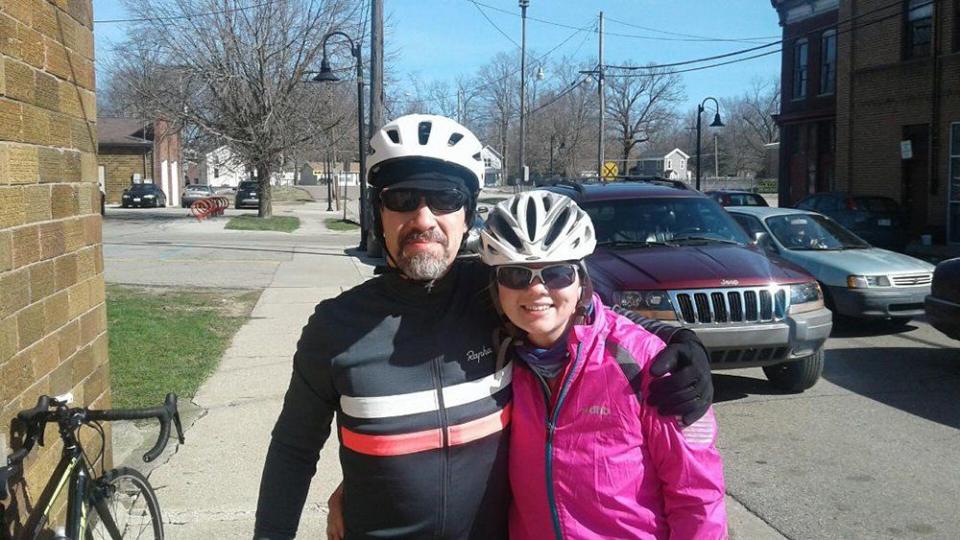
20 Minutes Before the Crash
Paul Runnels, 65, survivor: The group varied from week to week, so I didn’t know everyone on the ride that day, but it seemed like a good group. I was just looking forward to a nice ride, and we started off with a nice, easy pace.
Paul Gobble, 47, survivor: I’d ridden with the group several times, but that was my first time on that particular route.
Sheila Jeske: It was a cool evening, maybe in the low 60s and overcast. People were wearing long-sleeved jerseys and light jackets. Jen introduced Suzanne, Deb, and me to Melissa, who we hadn’t met before.
Jennifer Johnson: It’s a casual, no-drop ride. We were being very social, with lots of conversations. Paul [Runnels] was talking about a Colorado bike tour that he was going to be doing the week after.
Paul Runnels, survivor: I’ve ridden that road as part of a group and solo. People in the back were calling out the cars behind us, and people were giving us plenty of room. We ride these roads a lot, so drivers usually expect us.
Jennifer Johnson: Larry had a bout with cancer a while ago, and it was great to see him back . He and Tony were the patriarchs of the group, and they were making sure everyone was riding together and doing okay. For their age, they were still strong riders. More importantly, they were also really good people. They inspired all of us.
Paul Matyas, Kalamazoo County Undersheriff: We got a call about three or four miles from the crash site. A couple of minutes later, we got a second call. A driver had hit a vehicle, briefly left the road and drove away from the scene. He was driving through lawns. [We believe he] was so out of it, he didn’t know where he was driving. We had several cars out looking for him, but he was a moving target.
Moments Before
Five miles into the ride, the Chain Gang was pedaling up a slight hill on North Westnedge Avenue. There was a wide shoulder and clear lines of sight for several hundred yards. All nine riders were riding on or near the shoulder as Pickett's pickup approached from behind at an estimated 58 miles per hour, according to police reports.
Paul Runnels: Jen and I were at the front of the line, just starting up the hill and talking about where to regroup further up the road.
Jennifer Johnson: The road we were on isn’t heavily trafficked and has a big, wide shoulder. It’s just a beautiful area. Paul was with me when we hit the hill. We began to get single file, and that’s the last thing I remember.
None of the survivors remember the exact moment of the crash.
At about 6:36 p.m. witness Markus Eberhard exited Markin Glen County Park onto the 5500 block of North Westnedge Avenue and was walking along the shoulder when someone yelled, “Get out of the way!” He barely managed to avoid getting hit, as Pickett had driven the truck halfway onto the shoulder. But before Eberhard could warn the cyclists up the road the truck—now fully on the shoulder of the road—struck the group of riders from behind, sending bodies and bicycles flying.
Eberhard never saw the truck’s brake lights flash.
Moments After
The first emergency responders arrived on the scene within two minutes of the crash, and recall an awful scene . The force of the impact with the riders caved in the front of the pickup, disabling it, while the bikes had shattered into dozens of pieces of carbon fiber and twisted metal.
Paul Matyas: When I arrived, it looked like someone had dropped a bomb there, like a war zone. You want to save every last person, but some were dead, others were dying and there were some that could be saved. You want to keep trying to revive the ones who are dead, but you have to focus on the ones you can save.
Jennifer Johnson: I came to with four EMTs surrounding me. I couldn’t tell if it was a dream or not. I was lying next to a fence; my left hand was touching it. My right leg was bent 90 degrees in the wrong direction. One of the EMTs began asking me questions. He wanted to know how many people they needed to look for.
Sheila Jeske: I remember telling the first responders my name and my husband’s name. My next memory is waking up in the hospital. … My husband and daughter were there. I asked [the staff] how Deb and Suzanne were, and they told me people were at different hospitals and they didn’t know.
Steve Johnson, Jennifer’s husband: I got the call while I was cooking dinner for my kids. It was a close friend of the family. He told me there had been a horrible hit-and-run, and at least four people were dead. I immediately made the assumption that it was our group and was freaking out. I tried calling Jen, but the calls kept going directly to voicemail.
At that point, I was in absolute panic. I had to lean against a counter because I couldn’t stand on my own. I started putting the kids in the car, but didn’t know where I was going.
It’s a physically painful feeling not knowing if your wife is alive or dead.
Paul Matyas: A volunteer firefighter was the first on the scene. Out of the corner of his eye, he saw someone hunkered down in the weeds, hiding. Pickett’s truck was completely disabled. When police officers got there, the firefighter pointed him out; Pickett was completely out of it, totally non-responsive. His eyes kept rolling into the back of his head.
Jeff Getting, Prosecutor: Pickett was in custody almost immediately. It was obvious to the first responders that something was definitely wrong with him.
Darien Smith, the first police officer on the scene, in testimony during a preliminary hearing: He slurred [his words] and seemed completely out of it.... I believed he was under the influence of something.
Cecil Queen, Kalamazoo Township Police Officer: His eyes were open, and he could stand on his own, but he was having difficulty keeping his balance. While trying to talk to him, he would look at you and give a dead stare.
Steve Johnson: I started sobbing in relief when the hospital called to tell me Jen was alive. I had a few moments of joy until I remembered that several of our friends had been killed. There was such a mix of feelings—loss, sadness, disbelief, shock. I was there 10 to 15 minutes, maybe. I can’t begin to describe [how horrible the scene was].
Paul Matyas: I’ve been in law enforcement for 40 years, and the crash site was still difficult to see. … We had great cooperation with the local bike community. The victims’ friends were able to tell us whose bike belonged to whom. Before we cleared the scene, we set up debriefings with the first responders because we knew they were going to have some problems [dealing with what they saw].
Steve Johnson: Many of the first responders were volunteers and had never seen anything like that scene. We’ve been in touch with some of them since.
Jeff Getting: I had any number of emotions flowing through me at that time—anger, sadness, disbelief. We’d had a mass shooting just a few short months before this, then to go through another tragedy so soon afterward…it’s difficult to describe.
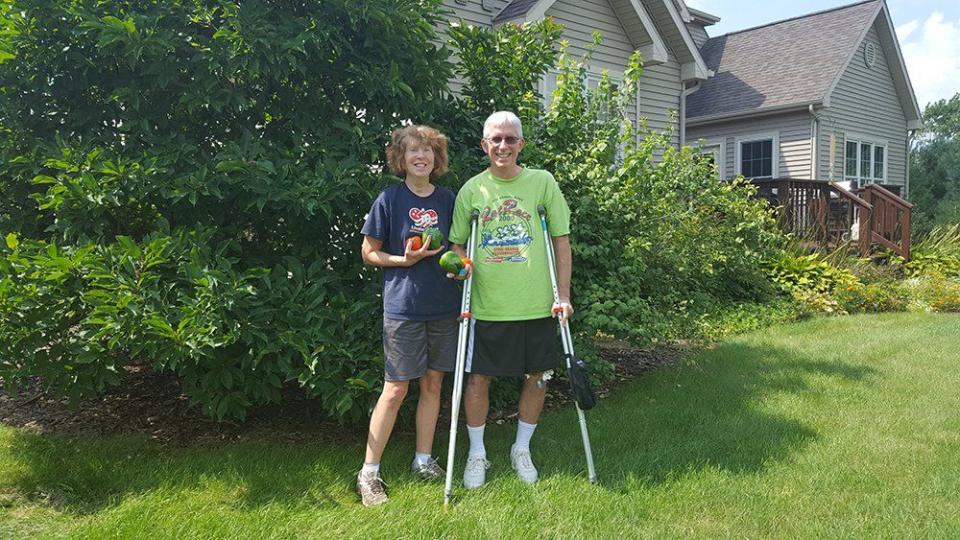
Several Hours After
The survivors suffered severe injuries. Johnson had a 16-inch rod inserted into her right femur, and her right hip and tailbone were broken. Several of her teeth were broken as well. Runnels suffered a fractured right hip, pelvis, scapula, ribs, and fibula, as well as a severe perineal laceration that surgeons had to treat before they could do pelvic surgery. He also had severe road rash with a deep laceration on one elbow that required stitches. Jeske dislocated her right hip; suffered a concussion; fractured her left ankle; broke her right ankle, multiple ribs, and teeth; and had a serious laceration on her right hand. Paul Gobble suffered a major head trauma, a broken leg and rib, and six fractures along his spine. For weeks doctors weren’t sure if he would be able to fully recover from his brain injury.
Jennifer Johnson: When my parents arrived at the hospital, I was still covered in sticks and debris from the side of the road. Later, my mom told me I looked like I weighed 300 pounds because of the amount of swelling from my injuries.
Sheila Jeske: I tried to put on a brave face. When the person was suturing my legs, I told them to do a good job because I have nice legs. (Laughs.)
My family tells me I was screaming bloody murder during some of the procedures, but I don’t remember any of that.
Paul Gobble: I remember seeing the look of fear and terror on my daughters’ faces when they saw me in the hospital. It was so tough on them and I couldn’t hug or hold them. I couldn’t really even talk to them at first.
Jennifer Johnson: I couldn’t stop shaking from the cold and shock. Things got blurry as they sent me in for X-rays, MRIs, CAT scans, and more. For the first 24 hours, I kept asking people what happened, but I couldn’t get any answers.
Steve Johnson: Melissa, one of my wife’s best friends, was killed in the crash. Her ex-husband Guy called me at the hospital. I told him I was so sorry, and he was confused. I had to tell him that Melissa was riding with Jen that evening. He didn’t know she was dead.
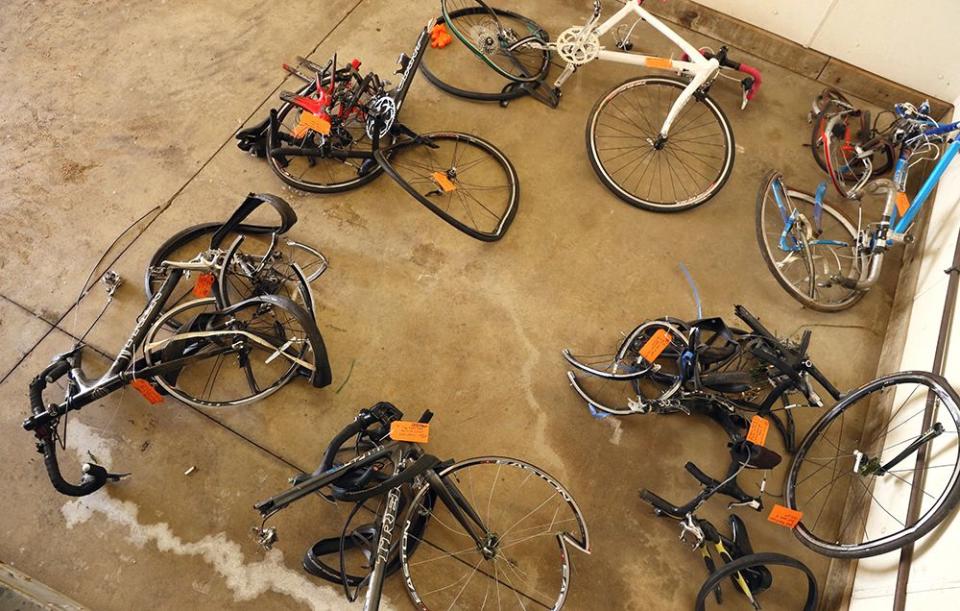
Days After
Paul Runnels: I knew that five of us were killed and four survived pretty early on, but didn’t know any of the names for several days. It was difficult to deal with. There was so much grief.
Sheila Jeske: They weren’t telling me about the situation for the first couple of days. The day after, I asked some girlfriends about Deb and Suzanne, but they wouldn’t say anything.
Jennifer Johnson: Learning that Melissa died … . We knew each other in high school, but it was only after we reconnected 10 years ago [that we got close]. Our boys played together. The two of us would often go out on adventures … . She was my go-to buddy when I just wanted to grab a beer. There’s this massive void in my life where she used to be.
The Kalamazoo community responded immediately to the horror of the crash. Within a day, white ghost bikes in memory of the victims were parked along the fence where the accident occurred. Hundreds of people turned out for two memorial rides that provided comfort and confidence to local riders.
Paul Selden, member of the Kalamazoo Bike Club: We had more than 600 cyclists for the Ride of Silence [the next day], more than we ever expected. It was a very somber mood, lots of pensive faces in the crowd, staring at the back of the person in front of them. That mood continued on throughout the ride, and it was only afterward that people began to relax. Everyone broke into smaller groups and started talking and telling stories about the friends we lost. It really was like a funeral. It was a sad occasion, but there was also some gladness, as people shared their happy memories about their friends.
Sheila Jeske: The day after the accident, all those bikes went by my hospital window during the Ride of Silence. To see that many people so soon afterward was amazing.
One week after the crash, Lance Armstrong joined dozens of other Chain Gang members to finish the previous week’s ride.
Steve Johnson: The ride brought such a feeling of healing. I wouldn’t have been able to get back on my bike that soon without it. The streets were lined with so many people, most of whom weren’t even part of our local cycling community, but who wanted to show support. It was one of the most powerful experiences in my life.
Paul Selden: Those rides marked a turning point, both for me personally and several other riders. It not only helped with our grief, but also gave us a feeling that we were taking back our roads.
Sheila Jeske: Kalamazoo cyclists are a strong community. People needed to see that we’re real people, moms and dads and grandparents, not crazy people on bikes. So it was great seeing all these middle-aged people in Spandex. For all the families who lost loved ones, I hope this support continues 10 years from now.
The people who were lost were incredible people who were dedicated to their families and the community. You’re not doing anything wrong, just going for a bike ride, and this happens. It’s a tragedy.
During their investigation, authorities discovered additional disturbing information about Pickett. Marijuana, Ciclobenzaprine, Tramadol, and methamphetamines were found in the truck after the crash; Pickett admitted to smoking meth most days. He told police he had taken 50 to 100 grams of tramadol the day of the crash, to ease the pain of a back injury.
In the days before the crash, according to police reports, Pickett kept his girlfriend a virtual prisoner in the hotel room they were sharing, sleeping at the door of the room to prevent her from leaving.
Although Pickett’s girlfriend was sympathetic, saying he’d been depressed for several months and upset about the recent death of a cousin, a former girlfriend told police Pickett had frequently abused both her and her 8-year-old daughter, stole money and credit cards from her, and threatened suicide if she left him. He often drove high on pills, she said.
Pickett would be charged with five counts each of second-degree murder and operating while intoxicated causing death, as well as four counts of operating while intoxicated causing serious injury. In September, he was declared mentally competent to stand trial, which is slated for later this year.
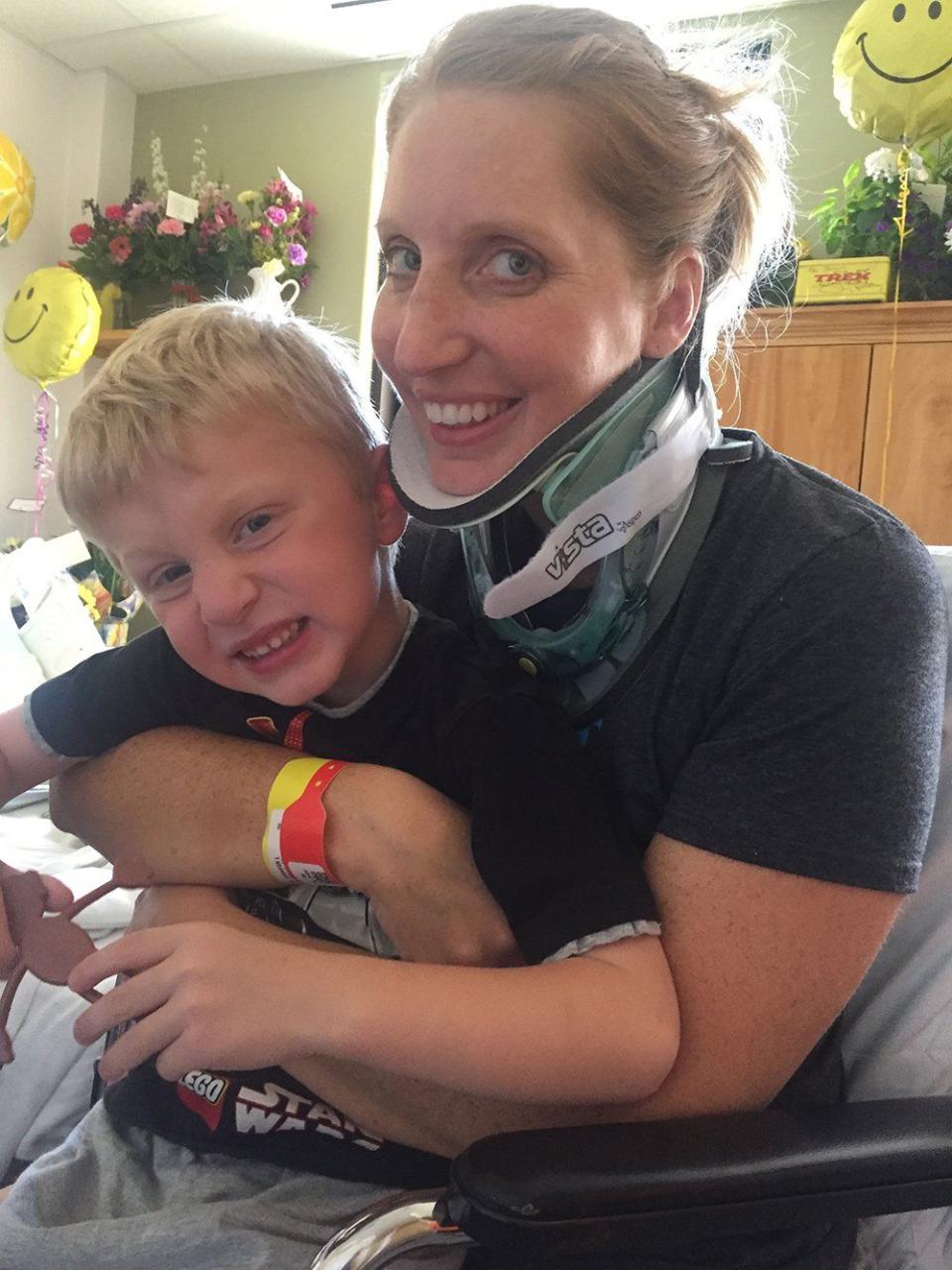
Today
The Chain Gang survivors say some good has come out of the horrific events that night. Most motorists are giving their cycling friends a wide berth when passing. The Michigan legislature moved forward several pieces of legislation to protect riders and other vulnerable road users, including mandating a five-foot buffer when vehicles pass people on bikes.
But challenges remain, not the least of which for the survivors is living with the trauma of that night.
Sheila Jeske: I don’t know what I’d say to [Pickett] if I saw him. I know some people say they forgive him, but I’m not there yet.
Jennifer Johnson: I still tear up every time I drive by the crash site. I’ve got conflicting emotions; I was spared, but lost a lot of friends that day.
Paul Runnels: I’m vacillating about getting back on a bicycle again. The physical act of riding a bike, let alone getting back on the road again, is going to be a challenge I’ll need to overcome. I love being active, being in the outdoors, and I don’t know how much of those activities I’ll ever be able to do again.
Paul Gobble: It’s been such an ordeal for our spouses and families. My wife Kris has been a rock, managing everything and keeping our two daughters going. Where she found the strength is beyond me.
I couldn’t be more fortunate [to have survived], but I still have a ways to go. I love being active, being in the outdoors, and now I don’t know how much of those activities I’ll ever be able to do again. My normal is going to be a new, different normal—I’ll never be back to that pre-crash normal again.
Jennifer Johnson: Before I was released to go home, I had to practice stepping up steps with a walker, and I couldn’t process how to do it. I’d climbed the highest mountain in Colorado with Melissa the previous year, and that one step was so much harder.
These quotes have come from personal interviews, online news sources, and in-court testimonies. Some have been edited lightly for clarity.
You Might Also Like

